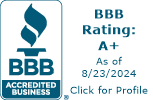Solar energy has come a long way over the years. We continue to experience a push for more sustainable, renewable energy sources, and solar power is one of the most efficient options. Our neighbors install solar panels. Businesses catch the sun on their flat rooftops. Stretches of bright open land are filled with the blinding, productive panels. It feels like a new technology – but it isn’t.
Interested in Solar Energy in Columbus, OH? Find out how The Eco Plumbers can help!
A Brief History of Solar Energy
Solar in the 1800s
The technology we are presently employing was actually in the works nearly 150 years ago. During the Industrial Revolution, a small group of thinkers and activists was already concerned about our emission levels. This group searched for alternative energy sources, one of which was the sun – free and almost always accessible.
In the 1870s, scientists discovered that selenium, which is a chemical element, would produce energy when exposed to the sun. This discovery resulted in the first solar panels. While the panels were not ideal for steady use, the experiments with selenium sparked the interest of other scientists. Eventually, the first solar heater was developed in 1891.
Solar in the 1900s
With the outbreaks of the World Wars in the early twentieth century, interest in solar energy was set aside. The country’s scientists, if not enlisting in the military, were busying themselves with matters directly related to the conflict. However, after the wars ended and a sense of normalcy was restored in the 1950s, experiments resumed.
The first commercially sold solar panel appeared in 1954. Bell Labs developed a photovoltaic (PV) cell that had enough power to convert sunlight into energy sufficient to run a whole household. The cost was well beyond the means of middle-class citizens, so there was not a rush to produce them. However, the technology was also used in novelty toys and by NASA – so the technology did not go unnoticed or unappreciated.
In the 1960s, solar energy was the standard means of powering NASA’s satellites.
During the 1970s, solar finally became a viable option for powering a house. The cost had lowered from $100 to $20 per watt. This is because the Exxon Corporation designed a panel that was less expensive to manufacture. This design was used to power warning lights on oil rigs in the Gulf of Mexico. Once released to the public, solar energy increased in popularity.
Solar in the 2000s
Since the 70s, 150,000 residential PV systems have been installed in the United States.
Solar panels are typically placed on the south slope of a roof, usually in a group of 20 250-watt panels. These panels constitute a 5-kilowatt-hour system. To make sense out of those figures, consider the fact that most American households use 10,000 kilowatts of electricity per year. With the 5-kwh system, a household would get 6,000 kilowatts annually. Most households who decide to go solar are seeking a more sustainable lifestyle, and this size system is generally sufficient.
The cost of solar energy is still high, which can certainly be problematic. However, as this 150-year-old technology matures, the price will continue to drop.
To learn more about eco-friendly products, contact The Eco Plumbers.












